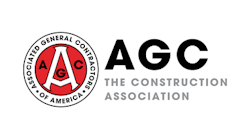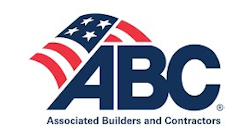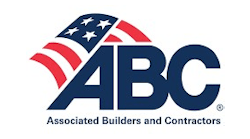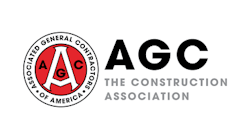Consider for a moment what your organization’s safety training program is like. Rank it on a scale of 1 to 10. Is there room for improvement? How do your employees view safety training? Is it considered a value, or something they’re made to do for compliance’s sake? How much do your employees remember or apply on the job after they have left your safety training meetings or your toolbox talks?
“All safety trainings are not equal,” says Todd Urban, of Construction Risk Control at St. Paul Travelers Companies. “The differences in effectiveness of training from one organization to another can be dramatic. Companies that do the bare minimum for compliance’s sake typically fall far short in providing a safe and healthy work environment for their employees.
“Training is important for several reasons,” Urban adds. “For one, a large number of fatalities are associated with construction work. The hazards are many, and conditions on the job site are constantly changing as work progresses. This includes worker exposures associated with heavy equipment as well as excavating and trenching. Training, or lack of it, can affect people, change lives, and impact families.”
As an example, Urban discusses how easily workers can become complacent and “cut corners” when it comes to properly sloping or shoring a trench. “Most workers do not realize what really can happen during a trench collapse. Soil can weigh about 100 pounds per cubic foot, or more than 1 ton per cubic yard. That’s equivalent to the weight of a pickup truck within the space of an office desk. And a cave-in doesn’t have to engulf the worker to be fatal. It happens quickly … in the blink of an eye. Once the soil begins to move, workers in harm’s way will have little time to react.”
Your Training Program
Urban emphasizes the need for worker training to cover the safety basics as well as site-specific requirements. An overview of your company safety program can cover items such as work rules, proper work attire, personal protective equipment, hazard communication, substance abuse, and accident reporting. Additionally, training should cover OSHA’s construction-industry regulations. For excavation work, this is found under Subpart P, 1926.650, and covers general requirements pertaining to protecting existing utilities, access and egress, exposures to vehicular traffic, heavy equipment, and falling loads, hazardous atmospheres, stability of adjacent structures, and hazards from water accumulation. Protective systems and awareness of overhead power lines should also be discussed.
Urban says worker training typically fails when no instructor interacts with employees to ensure that effective communication occurred. An instructor needs to receive feedback that training was retained and can be properly implemented on the job. Relying solely on a video won’t work. Neither will sending the employee home with a safety booklet to be read.
In addition to any formal worker training, daily pre-work meetings can assist in improving safety and are becoming more prominent. The daily pre-work meeting typically is held in the morning or prior to the shift, to integrate safety into the day’s work. During this meeting, onsite supervisors can address concerns from the previous day’s activities, review work procedures, discuss hazards related to the day’s tasks, confirm that appropriate equipment is available, and review personal protective equipment requirements and safe work procedures.
At this meeting workers can ask questions before the job starts—before it’s too late to prevent an accident. Here, a site supervisor can assess worker fitness as well. The boss can look crew members in the eye, confirm their understanding, and hopefully determine if anything is wrong. Perhaps a worker is under the influence, or preoccupied because of personal issues regarding finances, family, or other personal matters. Catching such matters upfront can circumvent huge problems later. It may be a difficult decision, but consider the consequences. Maybe someone needs the day off or, at the very least, to be assigned a different job task, if possible.
Training Hispanic Workers
A significant trend affecting the construction industry is the influx of immigrant workers. According to the US Bureau of Labor Statistics, Hispanic workers now hold more than 17% of all construction jobs. This is up from just under 10% in 1990 and projected to grow to nearly a quarter of the workforce by 2010. Along with this changing labor force come communication, cultural, and language barriers. And where these barriers exist, safety issues often arise.
Today, the majority of training programs and products are available in both English and Spanish. Still, much can be lost in the translation of simple words and phrases from English to Spanish. “The old saying that ‘actions speak louder than words’ holds true here,” Urban says. “As daunting as it might be to bridge cultural and language barriers when working with Hispanic workers, it’s critical for your supervisors to receive training and be aware of cultural differences in order to avoid misunderstandings or sending “mixed messages.”
For example, in some Hispanic cultures, looking a supervisor directly in the eyes is a sign of disrespect. Some Hispanic cultures also place great value on respecting supervisors and others in positions of authority. While this can help create positive working environments, it can also foster potentially dangerous situations where workers are reluctant to tell their supervisors when something is wrong on the job site. For example, a supervisor may ask a worker if certain safety issues are being addressed; to avoid conflict, the worker may reply yes when the answer really is no. In the end, effective communication and a mutual understanding of cultural differences between workers and supervisors are critical to maintaining worker and job-site safety.
For a variety of resources and information on managing and training Hispanic workers, visit the Hispanic Employers and Workers section of OSHA’s Web site at http://www.osha.gov/dcsp/compliance_assistance/index_hispanic.html.
Lives are at stake here. The truth is that people are dying every day in the construction industry. And it doesn’t have to happen. Is your training program part of the solution, or could it be part of the problem? In the final analysis, you can save time, be more efficient, and be safer by having an effective training program in place.








